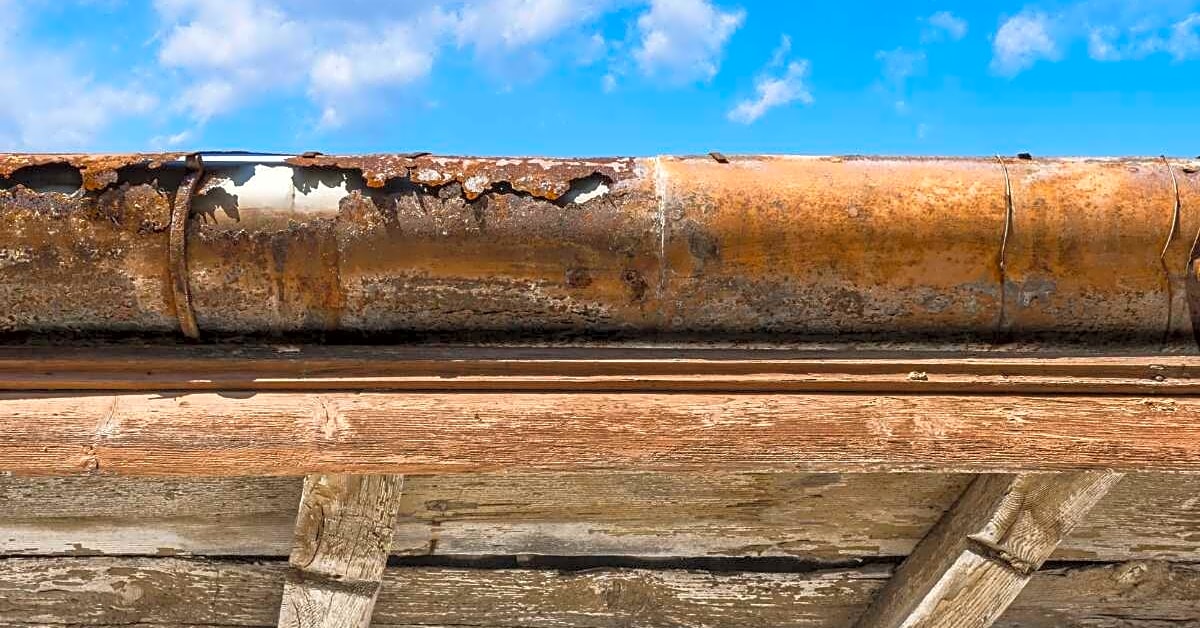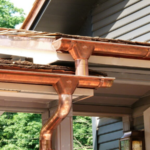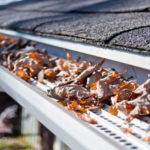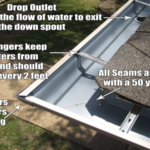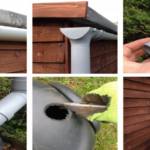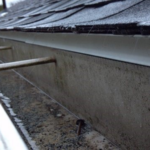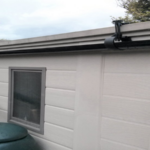Are you tired of constantly dealing with rust and corrosion on your gutters? As a homeowner, it can be frustrating to constantly have to repair or replace your gutter system due to these issues. However, with the right solutions, you can prevent rust and corrosion from damaging your gutters and prolong their lifespan. In this article, we will discuss the benefits of using gutter guards and how they can improve your gutter system’s lifespan. Whether you live in a region with high humidity or harsh weather conditions, these tips will help you keep your gutters in top shape. Say goodbye to the headache of constantly dealing with rust and corrosion – read on to find out how you can easily install gutter guards for maximum protection.
Gutters are an essential part of any home, protecting it from water damage by channeling rainwater away from the roof and foundation. However, gutters are also prone to rust and corrosion, which can cause them to clog and become ineffective. This is where gutter guards come in, providing a barrier between your gutters and debris to prevent clogging and prolong the lifespan of your gutter system.
When it comes to choosing the right gutter guard for your home, there are several options available. The most common types include covers, screens, and DIY options. Each type has its own set of benefits, so let’s take a closer look at each one.
Covers
Gutter covers are typically made of plastic or metal and are designed to cover the top of your gutters, allowing water to flow through while keeping out debris. The main benefit of covers is their ability to prevent leaves, twigs, and other debris from clogging your gutters. This not only helps to prevent rust and corrosion but also reduces the need for frequent gutter cleaning.
Screens
Gutter screens are similar to covers in that they act as a barrier between your gutters and debris. However, screens are made of wire mesh or plastic and are installed over the top of your gutters rather than covering them completely. Screens are effective in preventing large debris from entering your gutters, but smaller particles may still get through.
DIY Options
If you’re a handy homeowner, you may opt for a DIY gutter guard option such as foam inserts or brush guards. These types of guards are inserted into the gutter itself and act as a filter for debris. While they may be cheaper upfront, they may not be as effective in preventing rust and corrosion compared to covers or screens.
Now that we’ve covered the different types of gutter guards, let’s discuss the installation process. Depending on the type of guard you choose, the installation process may vary. However, in general, gutter guards are relatively easy to install and require minimal tools and materials. You may need a ladder, drill, screws, and a measuring tape for covers and screens, while DIY options may only require scissors or a utility knife.
When installing gutter guards, it’s important to follow the manufacturer’s instructions carefully. This will ensure that the guards are properly installed and provide maximum protection for your gutters. It’s also important to regularly inspect and clean your gutter guards to ensure they are functioning properly and not clogged with debris.
While gutter guards offer many benefits, there may be some concerns or drawbacks to consider. For example, some covers may not be able to handle heavy rain or snow, causing water to overflow or seep into your gutters. Additionally, screens may become clogged over time and require frequent cleaning. It’s important to research and choose the right gutter guard for your specific needs and climate.
Finally, let’s talk about the potential cost savings of using gutter guards. While the upfront cost of gutter guards may seem expensive, they can save you money in the long run by preventing damage to your gutters and improving their lifespan. Clogged gutters can lead to water damage, which can be costly to repair. By investing in gutter guards, you can avoid these potential costs and enjoy a longer-lasting gutter system.
In conclusion, gutter guards are an essential component of protecting your gutters from rust and corrosion. With the variety of types available, you can choose the one that best suits your needs and budget. By following proper installation and maintenance practices, you can enjoy the benefits of clean and efficient gutters for years to come.
Installation Process
We will provide a step-by-step guide for installing each type of gutter guard, along with tips for easy installation.
Cost Savings
We will discuss the potential cost savings of using gutter guards, including how they can improve your gutter system’s lifespan and prevent costly damage.
Types of Gutter Guards
Gutter guards are an essential component in preventing rust and corrosion on your gutters. Not only do they keep leaves and debris from clogging your gutters, but they also make for an easy and effective installation process.
There are several types of gutter guards available on the market, each with their own unique benefits. Some of the most popular options include covers, screens, and DIY options.
Covers: These gutter guards are typically made of metal or plastic and are designed to cover the entire gutter, allowing water to flow through small holes while keeping out leaves and debris. They are a great option for those who want a low-maintenance solution.
Screens: Similar to covers, screens also cover the gutter but are made of wire mesh or foam. They are more affordable than covers and can be easily installed on your own.
DIY Options: For those who prefer a hands-on approach, there are DIY gutter guard options available. These often come in the form of foam inserts or brush-like materials that can be placed inside the gutter to prevent debris from clogging it.
Potential Concerns and Drawbacks
While gutter guards offer numerous benefits, there are also some potential concerns and drawbacks that should be considered before installing them on your gutters. One concern is that gutter guards may not be as effective in preventing clogs if you have trees with small leaves or needles near your home. In these cases, the debris may still be able to get through the guard and clog your gutters.
Another potential drawback is that gutter guards can be more expensive than traditional gutter cleaning methods. Depending on the type of guard you choose, installation costs can add up quickly. Additionally, if your gutters are already damaged or in need of repair, installing guards may not solve the underlying issue and could end up costing you more in the long run.
Another concern is that gutter guards may require more maintenance than expected. While they may prevent leaves and debris from entering your gutters, they can still become clogged with dirt and grime over time. This can lead to reduced effectiveness and require regular cleaning or maintenance to keep them working properly.
It’s also important to note that not all gutter guards are created equal. Some types may work better for certain types of roofs or climates, so it’s important to do your research and choose the right type for your home.
Despite these concerns, gutter guards still offer numerous benefits and can greatly improve the lifespan of your gutter system. We recommend speaking with a professional to determine if gutter guards are the right solution for your home and addressing any potential concerns or drawbacks before making a decision.
In conclusion, gutter guards are a crucial investment for protecting your gutters from rust and corrosion. They come in various types to fit your specific needs and are easy to install with the right tools and knowledge. By using gutter guards, you can save money in the long run by preventing damage to your gutters and extending their lifespan.
